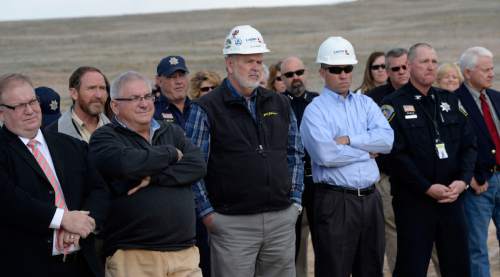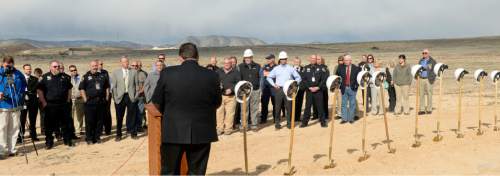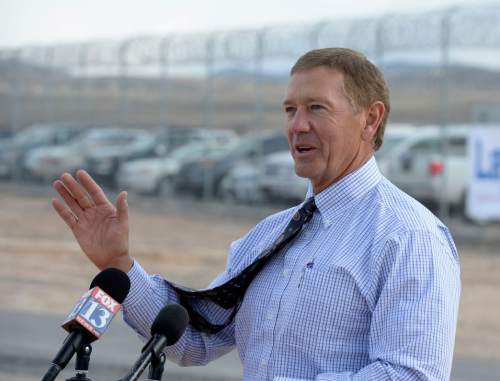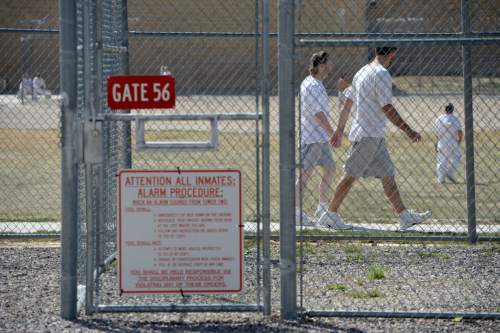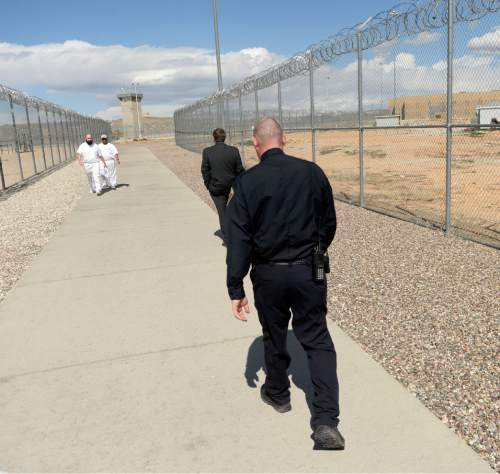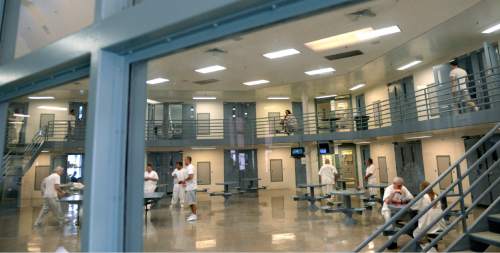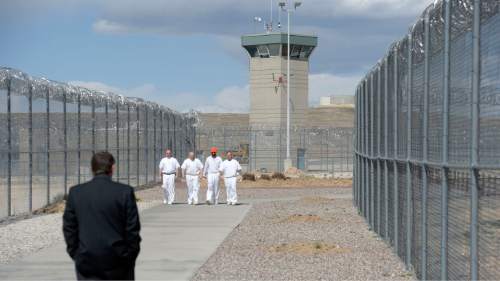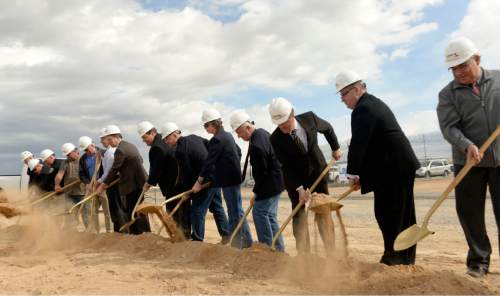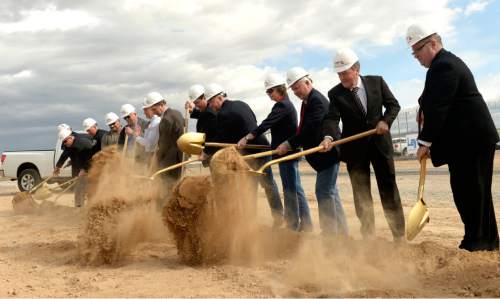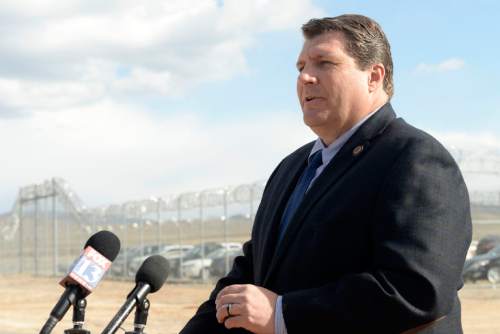This is an archived article that was published on sltrib.com in 2015, and information in the article may be outdated. It is provided only for personal research purposes and may not be reprinted.
Gunnison • While several Wasatch Front cities have spurned a proposed Utah State Prison move to their communities, folks in this Sanpete County town couldn't be happier that the Central Utah Correctional Facility is located here.
On Monday, Department of Corrections officials broke ground on a $30 million expansion of the existing 1,600-inmate facility in Gunnison. Upon completion in August 2016, it will add an additional 192 beds and require 76 more employees.
Presently, the central Utah prison employs about 350 with an annual payroll of $26 million. Most live in the six-county region encompassing Juab, Millard, Piute, Sanpete, Sevier and Wayne counties.
Gunnison Mayor Bruce Blackham said the prison has brought opportunities to the town of about 1,600 that didn't exist before. It has created jobs that have allowed young central Utah families to stay in the rural setting they love.
The facility, which opened in 1990, was invited into the community by Blackham and others who argued the area was in dire need of an economic boost. At the time, they worried about potential negatives, such as an upswing in crime, increased drug trafficking and security risks from inmates.
"We have experienced none of the negatives since the prison opened 25 years ago," Blackham said.
Beyond that, he added, the increase of law-enforcement officials living and working in the area has enhanced security.
"This is how you do it right," the mayor said. "This is how corrections and small-town people make it work and make it work well."
In its quarter century of operation, only one inmate escaped, Blackham said. That was in 1994 and townsfolk didn't find out about it until the fugitive was captured in Arizona.
The Department of Corrections could not wait for a determination on where a new state prison may be located to move ahead with the Gunnison expansion, said Rollin Cook, executive director.
The project will come just in time to handle Utah's growing inmate population, he said.
The state system currently incarcerates some 5,500 inmates and grows by an average of 144 each year.
In Utah, inmates are offered education, job training, counseling and other programs, Cook noted, because 95 percent of them will some day be released.
In the long run, criminal-justice reforms could slow the inmate population growth as offenders with mental illnesses and drug addictions enter treatment programs rather than prison, Cook said. But, in the immediate future, more beds are necessary to prevent early release of inmates.
State Sen. Daniel Thatcher, R-West Valley City, who is co-chairman of the criminal-justice budget committee, said northern Utahns should take note of Gunnison as a good example of how a prison can be part of a larger community.
"The arguments people make for not wanting a prison in their community," Thatcher said, "are based on emotion and have nothing to do with reality."
Nonetheless, Thatcher said, getting funding for the expansion "took a lot of heavy lifting" over several years.
Securing money for corrections, as important as it is, he said, is no easy task because people like to ignore the prison system.


